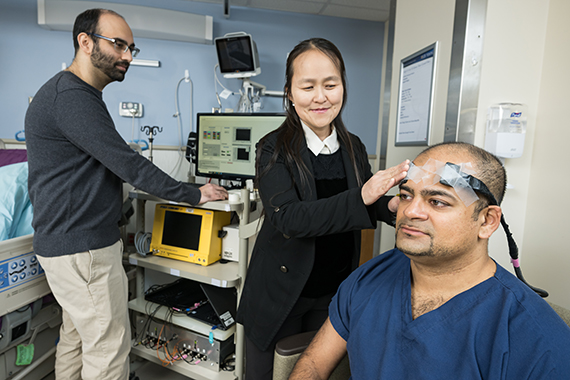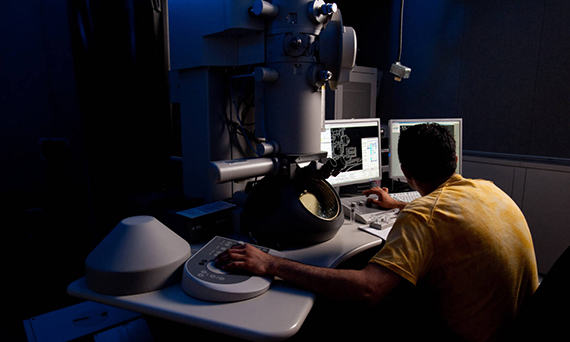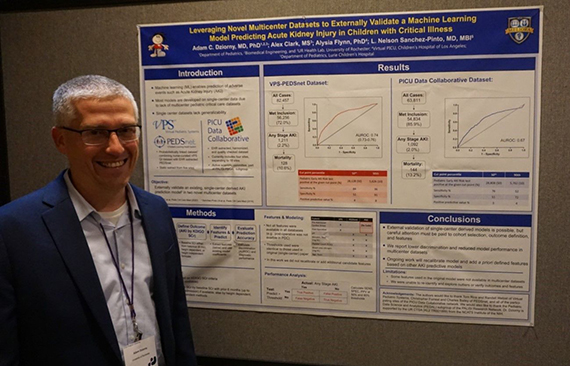March 18, 2024

(University of Rochester photo / J. Adam Fenster)
Dear members of the Hajim School community,
With the Hajim quad just a five-minute walk from the University of Rochester Medical Center, we have seemingly endless opportunities for collaboration in the biomedical field. Regine Choe, an associate professor of biomedical engineering and of electrical and computer engineering, is taking advantage of that link, conducting exciting research with collaborators from the Department of Neurology and the School of Medicine and Dentistry.
Regine and her collaborators are developing neuromonitoring techniques to prevent brain injuries associated with extracorporeal membrane oxygenation (ECMO), which can be a life-saving therapy for patients with acute heart or lung failure. They have linked together multiple devices to evaluate different aspects of the brain’s health, and thanks to funding from the National Institutes of Health, they will test their process on 100 comatose patients who have suffered from cardiac arrest, some of whom are receiving ECMO and others who are not.
Learn more about this transformative research at the News Center.
LLE AND URNANO RECEIVE BOOSTS IN FEDERAL FUNDING

(University of Rochester photo / J. Adam Fenster)
Two facilities that provide incredible research opportunities for Hajim faculty, students, and staff will receive crucial new funding from the federal government.
The Laboratory for Laser Energetics (LLE) will receive $99.4 million in federal funding from the US Department of Energy’s National Nuclear Security Administration’s (NNSA) Inertial Confinement Fusion (ICF) program for its Omega Laser Facility for the 2024 fiscal year. The new funding will be used to conduct ICF research in support of the NNSA’s Stockpile Stewardship and Management Program, which maintains the safety, security, and effectiveness of the US nuclear deterrent. Additionally, the funding will allow the facility to continue its work toward advancing research into fusion and understanding matter at extreme conditions. Read more.
The University is also receiving $1.25 million to obtain and install a new advanced multipurpose transmission electron microscope as part of the fiscal year 2024 appropriations bill. The new instrument will replace the University’s current instrument, which is beyond its expected lifetime, and enhance the ability of researchers in the greater Rochester region and beyond to conduct advanced quantum research. The new transmission electron microscope will be housed at URnano, the University’s Integrated Nanosystems Center. Read more.
We are grateful to Senator Schumer, Senator Gillibrand, and Representative Morelle for their incredible ongoing support and for this new funding.
COUNTDOWN TO THE ECLIPSE

On April 8, the University will fall under the shadow of a total solar eclipse. Do you know where you’re watching? Do you have glasses to watch safely? Do you know how rare an event this is or about the alumnus whose observations led to a discovery about the sun’s corona? Guidance and information on all of that—plus a countdown clock—can be found on the University’s eclipse site.
I encourage you to watch a short video that highlights the eclipse’s significance and provides essential tips for safety. The video features Professor Jim Zavislan, who worked with students to test the protective glasses the University is distributing using detectors at the Institute of Optics. The tests were a fun educational opportunity for our students to learn how to test optics. Watch now.
PLASMA OSCILLATIONS PROPEL BREAKTHROUGHS IN FUSION ENERGY

(Getty Images photo)
One of our scientists helped discover a new class of plasma oscillations—the back-and-forth, wave-like movement of electrons and ions. The findings have implications for improving the performance of miniature particle accelerators and the reactors used to create fusion energy.
John Palastro, a senior scientist at the Laboratory for Laser Energetics, an assistant professor in the Department of Mechanical Engineering, and an associate professor at the Institute of Optics, is the lead author of a new paper published in Physical Review Letters. “This new class of plasma oscillations can exhibit extraordinary features that open the door to innovative advancements in particle acceleration and fusion,” says John.
Learn more at the News Center.
BUILDING BETTER TOOLS TO PREDICT KIDNEY INJURIES IN KIDS

(Clinical and Translational Science Awards Program photo)
Children who come into the ICU for any number of reasons may wind up with acute kidney injury, a dangerous condition in which kidneys can no longer filter waste from the blood. If doctors catch the warning signs early, there are several things they can do to prevent acute kidney injury in kids, but it can be difficult to predict which patients are at risk.
Adam Dziorny, an assistant professor of pediatric critical care and biomedical engineering, thinks that machine learning and artificial intelligence methods can help. He is building a tool that can identify children who are at risk for developing acute kidney injury and alert health care providers. Learn more on the URMC website.
SEE DIVERSITY RECOGNITION PROGRAM

I’m pleased to share that once again, the Hajim School has been recognized for our commitment to diversity, equity, and inclusion by the American Society for Engineering Education (ASEE). We have received Bronze-level distinction from the ASEE Diversity Recognition Program (ADRP).
The ADRP was created to publicly recognize engineering and engineering technology colleges that make significant, measurable progress in increasing the diversity, inclusion, and degree attainment outcomes of their programs. At the Hajim School, we’re dedicated to cultivating an equitable, respectful, and welcoming culture for all, and we will continue to push to ensure every individual is respected and valued for the contributions they bring to our academic mission. See the list of recognized institutions.
Have a great week!
Your dean,
Wendi Heinzelman